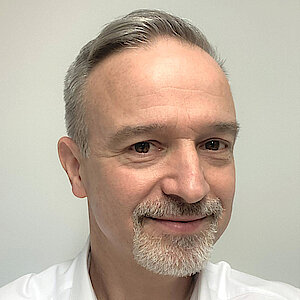The materials science of sustainable metallurgy
Mechanical Engineering and Materials Science Seminar Series
Seminars are held weekly on Wednesday at 2:30 PM. Please contact Diana Qiu, Amir Pahlavan, or Rebecca Kramer-Bottiglio with speaker suggestions.
September 22, 2021
"The materials science of sustainable metallurgy"
Dierk Raabe
Max Plank Institute

Abstract: This presentation is about approaches for the improvement of the sustainability of metallic alloys, specifically steels. Metals have enabled technological progress over millennia and have an enduring importance in our society. They paved the path of human civilization with load-bearing and functional applications that can be used under the harshest environmental conditions, from the Bronze Age onwards. Only metallic materials encompass such diverse features as strength, hardness, workability, damage tolerance, joinability, ductility and toughness, often combined with functional properties such as corrosion resistance, thermal and electric conductivity and magnetism [1].
Today we produce and consume about 2 billion tons of metals every year, with steels alone standing for an annual production of currently 1.85 billion tons. The huge and accelerating demand for load-bearing (structural) and functional metallic alloys in key sectors such as green energy supply, infrastructures, health, durable construction, robotics, passenger safety and modern transportation is resulting in predicted production growth rates of up to 200% until 2050 [2]. Most of these materials, specifically steel, aluminium, nickel and titanium, require a lot of energy when extracted and manufactured and these processes emit large amounts of greenhouse gases and pollution. This means that the huge success of metallic products and industries also brings them into a position where they have an essential role in addressing environmental aspects [3].
The vast availability of metals (some of the elements used in alloys are among the most abundant ones), efficient mass producibility, low price and amenability to large-scale industrial production (from extraction to the alloy) and manufacturing (downstream operations after solidification) have become a substantial environmental burden: worldwide production of metals leads to a total energy consumption of about 53 exa Joules (8% of the global energy used) and 35% of industrial CO2-equivalent emissions (4.4 giga tons of carbon dioxide equivalent) when counting only steels and aluminium alloys (the largest fraction of metal use by volume) [1,2].
This lecture presents several aspects related to this field, with a focus on methods for improving the sustainability of steels, in areas including reduced-carbon-dioxide primary production [3,4], recycling and scrap-compatible alloy design. The lecture also discusses the effectiveness and technological readiness of individual measures and also shows how novel structural materials enable improved energy efficiency through their reduced mass, higher thermal stability and better mechanical properties than currently available alloys [2].
[1] youtube: Sustainable Metallurgy and Green Metals https://www.youtube.com/watch?v=1kihsaLSxv0
[2] Raabe D, Tasan CC, Olivetti EA. Strategies for improving the sustainability of structural metals. Nature. 2019 Nov; 575 (7781): 64-74.
https://www.nature.com/articles/s41586-019-1702-5
[3] SH Kim, X Zhang, Y Ma, IR Souza Filho, K Schweinar, et al. Influence of microstructure and atomic-scale chemistry on the direct reduction of iron ore with hydrogen at 700° C, Acta Materialia, 2021
https://www.sciencedirect.com/science/article/pii/S135964542100313X
[4] IR Souza Filho, Y Ma, M Kulse, D Ponge, B Gault, et al. Sustainable steel through hydrogen plasma reduction of iron ore: Process, kinetics, microstructure, chemistry, Acta Materialia, 2021
https://www.sciencedirect.com/science/article/pii/S1359645421003517
Short bio:Dierk Raabe studied music, metallurgy and metal physics at RWTH Aachen. After his doctorate 1992 and habilitation 1997 at RWTH Aachen he worked at Carnegie Mellon University (Pittsburgh) and at the National High Magnet Field Lab (Tallahassee) and joined Max Planck Society as a director in 1999. His interests are in sustainable metallurgy, microstructure, alloy design, computational materials science and atom probe tomography. We received the Leibniz award (highest German Science award) and an ERC Advanced Grant (Highest European Research grant).
Available to meet for meetings before and after seminar.

